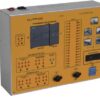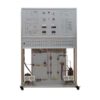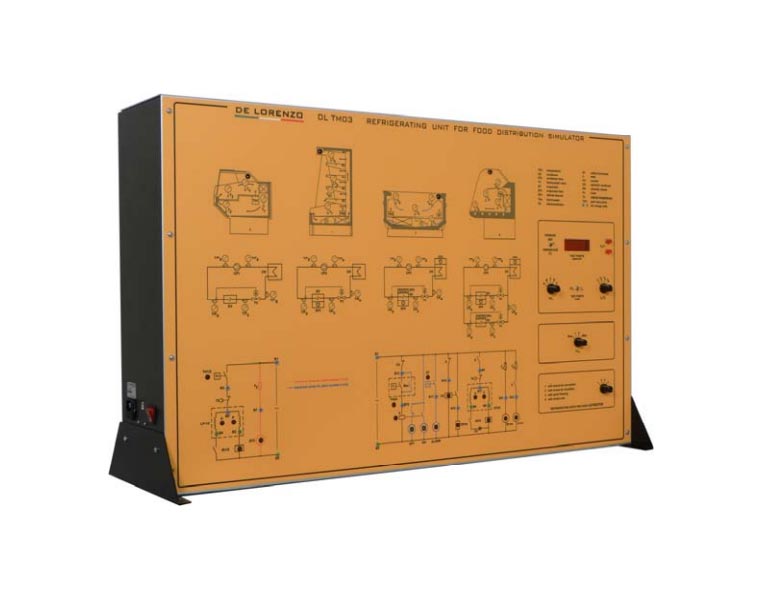TRAINING OBJECTIVES
It is possible to simulate the behaviour of components and systems, on the basis of the operating conditions which can be monitored directly on the panel or through Personal Computer by teacher and students.
The Personal Computer constantly keeps under control the simulation in progress and displays its behaviour through analog and digital signals and meters; in this way the student, through measurements and tests, can go on with the troubleshooting.
TECHNICAL DESCRIPTION
The natural air circulation cabinet is composed of the following main elements:
• Hermetic compressor with thermal protection and intensity relay
• Static condenser
• Automatic thermostatic valve
• Natural air circulation static evaporator
• Regulation thermostat
• Refrigerating fluid temperature/pressure test‐points
• Possibility to check the level of the temperature inside the cabinet
The 5‐level refrigerated cabinet is composed of the following main elements:
• Hermetic compressor with thermal protection and intensity relay
• Static condenser
• Automatic thermostatic valve
• Forced air circulation static evaporator
• Regulation thermostat
• Refrigerating fluid temperature/pressure test‐points
• Possibility to check the level of the temperature inside the cabinet
The island for frozen food is composed of the following main elements:
• Hermetic compressor with thermal protection and intensity relay with starting condenser
• Forced air cooling condenser
• Automatic thermostatic valve
• Forced air circulation static evaporator
• Regulation thermostat
• Defrosting resistor controlled by a counting device
• Refrigerating fluid temperature/pressure test‐points
• Possibility to check the level of the temperature inside the cabinet
REFRIGERATING UNIT FOR FOOD DISTRIBUTION
The simulator allows the study, the performing of experiments and the troubleshooting for the following systems:
• Natural air circulation cabinet
• Forced circulation 5‐level refrigerated cabinet
• Island for frozen food
• Mixed cold cabinet
These systems are reproduced on the panel, through a colour representation which allows a complete analysis of the fluid circuit, of its components and of the electrical/electronic circuit for control and regulation.

















